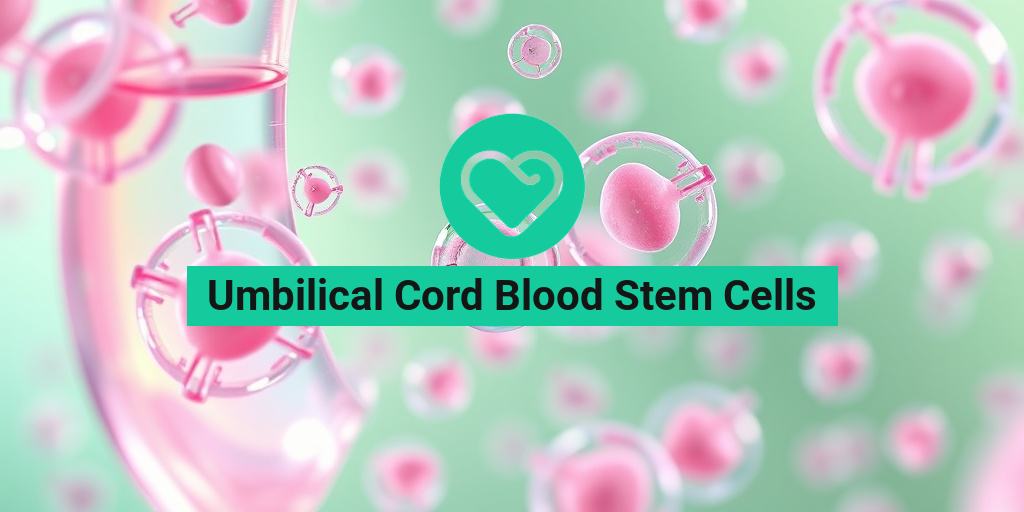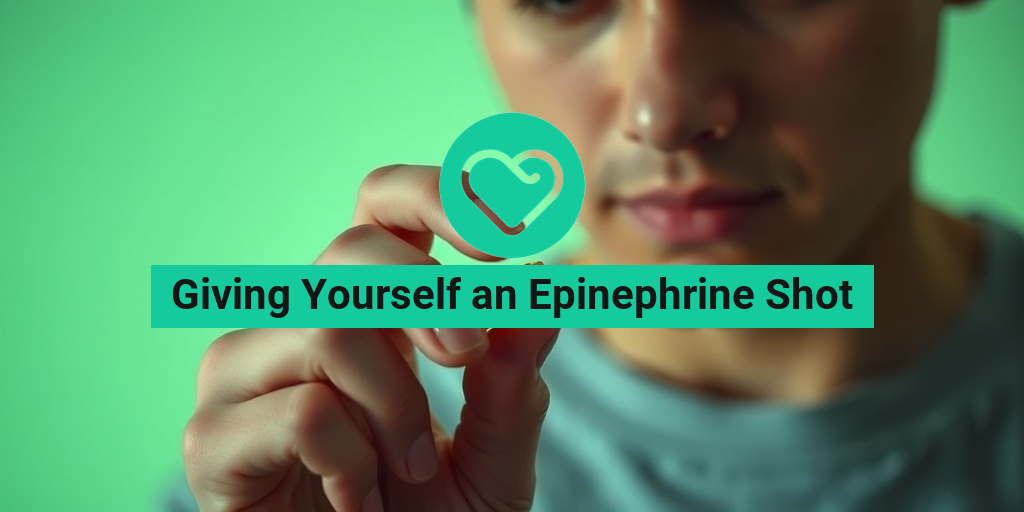What Are Umbilical Cord Blood Stem Cells?
Umbilical cord blood stem cells are a remarkable resource derived from the blood found in the umbilical cord and placenta after childbirth. These cells are a type of hematopoietic stem cell, which means they have the unique ability to develop into various types of blood cells, including red blood cells, white blood cells, and platelets. This characteristic makes them invaluable in the field of regenerative medicine and transplantation.
The Collection Process
The collection of umbilical cord blood is a safe and painless procedure that occurs immediately after the baby is born. Once the umbilical cord is clamped and cut, the blood remaining in the cord and placenta is collected using a sterile technique. This process typically takes only a few minutes and poses no risk to the mother or the newborn. The collected blood is then sent to a cord blood bank for processing and storage.
Types of Stem Cells in Cord Blood
Umbilical cord blood contains several types of stem cells, but the most notable are:
- Hematopoietic Stem Cells: These are the primary cells used in transplants and can regenerate blood and immune cells.
- Mesenchymal Stem Cells: These cells can differentiate into various cell types, including bone, cartilage, and fat cells, making them useful for tissue repair.
Due to their unique properties, umbilical cord blood stem cells are being researched for their potential in treating a variety of diseases, including certain cancers, genetic disorders, and autoimmune diseases.
Benefits of Cord Blood Stem Cells
The advantages of using umbilical cord blood stem cells are numerous, making them a valuable asset in modern medicine. Here are some of the key benefits:
1. Less Risk of Rejection
One of the most significant benefits of umbilical cord blood stem cells is the lower risk of rejection when used in transplants. Because these cells are collected from a newborn, they are less likely to provoke an immune response in the recipient, especially if the donor and recipient are not closely matched. This characteristic makes cord blood transplants a viable option for patients who may not find a suitable bone marrow donor.
2. Availability and Ease of Collection
Unlike bone marrow, which requires a surgical procedure for collection, umbilical cord blood can be collected easily and painlessly. This ease of collection means that more families can choose to bank their baby’s cord blood, increasing the availability of stem cells for future medical use.
3. Potential for Treating Various Conditions
Research has shown that umbilical cord blood stem cells can be used to treat a wide range of conditions, including:
- Blood Disorders: Such as leukemia and lymphoma.
- Genetic Disorders: Including sickle cell disease and thalassemia.
- Immune System Disorders: Such as severe combined immunodeficiency (SCID).
Additionally, ongoing studies are exploring the use of cord blood stem cells in regenerative therapies for conditions like cerebral palsy and spinal cord injuries.
4. Long-Term Storage and Future Use
Umbilical cord blood can be stored for many years, allowing families to have access to these precious stem cells for potential future medical needs. Many cord blood banks offer long-term storage options, ensuring that the cells remain viable for use in therapies as they develop.
5. Ethical Considerations
Collecting umbilical cord blood is considered an ethical practice, as it does not involve any harm to the mother or baby. This aspect makes it a more favorable option compared to other sources of stem cells, such as embryonic stem cells, which raise ethical concerns.
In conclusion, umbilical cord blood stem cells represent a promising frontier in medical science, offering numerous benefits for both current and future therapies. If you’re considering cord blood banking, it’s essential to research and choose a reputable cord blood bank. For more information on health-related topics, you can visit Yesil Health AI, a valuable resource for evidence-based health answers. 🌟

Uses in Medical Treatments
Umbilical cord blood stem cells have emerged as a revolutionary resource in the field of medicine. These cells, derived from the blood remaining in the umbilical cord and placenta after childbirth, are rich in hematopoietic stem cells, which can develop into various types of blood cells. Their unique properties make them invaluable in treating a range of medical conditions.
1. Hematological Disorders
One of the most significant uses of umbilical cord blood stem cells is in the treatment of hematological disorders. Conditions such as leukemia, lymphoma, and anemia can be treated effectively with stem cell transplants. These cells can help restore healthy blood cell production, offering hope to patients who may not respond to traditional therapies.
2. Genetic Disorders
Umbilical cord blood stem cells are also utilized in treating various genetic disorders. For instance, conditions like sickle cell disease and thalassemia can benefit from stem cell therapy. By replacing defective blood cells with healthy ones derived from cord blood, patients can experience significant improvements in their health and quality of life.
3. Immune System Disorders
Another promising application of umbilical cord blood stem cells is in the treatment of immune system disorders. Diseases such as severe combined immunodeficiency (SCID) can be treated by transplanting healthy stem cells, which help rebuild the immune system. This can be life-saving for infants born with such conditions.
4. Neurological Conditions
Recent research has also explored the potential of umbilical cord blood stem cells in treating neurological conditions. While still in the experimental stages, studies suggest that these cells may aid in the recovery from cerebral palsy and other brain injuries. The regenerative properties of stem cells could help repair damaged neural pathways, offering new hope for affected individuals.
5. Future Potential in Regenerative Medicine
The future of umbilical cord blood stem cells in regenerative medicine looks promising. Ongoing research is investigating their potential in treating conditions such as diabetes, heart disease, and even spinal cord injuries. As scientists continue to unlock the secrets of these remarkable cells, we may see even more innovative therapies emerge.
Collection Process Explained
The collection of umbilical cord blood stem cells is a straightforward and safe process that occurs immediately after childbirth. Understanding this process can help expectant parents make informed decisions about cord blood banking.
1. Preparation Before Delivery
Before the delivery, parents should discuss their interest in cord blood banking with their healthcare provider. This conversation typically includes choosing a reputable cord blood bank and understanding the associated costs. It’s essential to have a plan in place to ensure a smooth collection process.
2. Collection During Delivery
Once the baby is born, the healthcare team will clamp and cut the umbilical cord. The collection of cord blood occurs after this step. A sterile needle is inserted into the umbilical vein, and the blood is drawn into a collection bag. This process takes only a few minutes and is painless for both the mother and the baby.
3. Transport to the Cord Blood Bank
After collection, the cord blood is labeled and transported to the cord blood bank in a temperature-controlled container. It is crucial that the blood is processed within a specific timeframe to ensure the viability of the stem cells.
4. Processing and Storage
Upon arrival at the cord blood bank, the collected blood undergoes testing for infectious diseases and is processed to isolate the stem cells. The viable stem cells are then cryopreserved in liquid nitrogen, allowing them to be stored for many years. This preservation ensures that they remain available for future medical treatments.
5. The Importance of Timing
Timing is critical in the collection process. The sooner the cord blood is processed after collection, the higher the chances of preserving viable stem cells. Therefore, it’s essential for parents to communicate their wishes clearly with their healthcare team to ensure a successful collection.
In summary, umbilical cord blood stem cells offer a wealth of potential in medical treatments, from hematological disorders to future regenerative therapies. Understanding the collection process can empower parents to make informed decisions about banking these valuable cells for their child’s future health. 🌟

Storage and Preservation
When it comes to umbilical cord blood stem cells, one of the most critical aspects is their storage and preservation. These cells have the potential to treat various diseases, making their proper handling essential for future medical use.
What is Umbilical Cord Blood?
Umbilical cord blood is the blood that remains in the umbilical cord and placenta after a baby is born. This blood is rich in stem cells, which are undifferentiated cells capable of developing into different types of cells in the body. These stem cells can be used in therapies for conditions such as leukemia, lymphoma, and certain genetic disorders.
Why is Storage Important?
The viability of umbilical cord blood stem cells depends significantly on how they are stored. Proper storage ensures that these cells remain healthy and functional for future medical treatments. Here are some key reasons why storage is crucial:
- Longevity: Stem cells can be preserved for many years, making them available for future use.
- Quality: Proper preservation techniques maintain the integrity and potency of the stem cells.
- Accessibility: Stored stem cells can be quickly accessed in emergencies, providing timely treatment options.
Methods of Storage
There are two primary methods for storing umbilical cord blood stem cells: public banking and private banking.
Public Banking
In public banking, donated cord blood is stored in a public facility and made available for anyone in need. This method is often free of charge and contributes to a larger pool of stem cells that can be used for research and treatment.
Private Banking
Private banking involves storing the cord blood for personal use. Parents pay a fee for the collection and storage, ensuring that the stem cells are available exclusively for their family. This option is often chosen by families with a history of genetic disorders or other health concerns.
Preservation Techniques
The preservation of umbilical cord blood stem cells typically involves the following steps:
- Collection: The blood is collected immediately after birth using sterile techniques.
- Processing: The blood is processed to isolate the stem cells from other components.
- Cryopreservation: The stem cells are frozen using liquid nitrogen, which allows for long-term storage without damaging the cells.
These techniques ensure that the stem cells remain viable and ready for use when needed. 🧊
Research and Clinical Trials
The field of umbilical cord blood stem cells is rapidly evolving, with ongoing research and clinical trials exploring their potential in various medical applications. This research is crucial for understanding how these cells can be used effectively in treatments.
Current Research Areas
Researchers are investigating several promising areas for the use of umbilical cord blood stem cells, including:
- Hematological Disorders: Studies are focusing on using these stem cells to treat blood-related diseases such as sickle cell anemia and thalassemia.
- Neurological Conditions: Research is being conducted on the potential of these cells to treat conditions like cerebral palsy and spinal cord injuries.
- Autoimmune Diseases: Trials are exploring the use of cord blood stem cells in treating diseases like multiple sclerosis and lupus.
Clinical Trials
Clinical trials play a vital role in advancing the understanding and application of umbilical cord blood stem cells. These trials are designed to test the safety and efficacy of new treatments. Here are some key points about clinical trials:
- Phases: Clinical trials typically progress through several phases, starting with small groups and gradually expanding to larger populations.
- Eligibility: Participants are often required to meet specific criteria to ensure the safety and reliability of the results.
- Outcomes: The results of these trials can lead to new treatment protocols and improve existing therapies.
Future Directions
The future of umbilical cord blood stem cells looks promising, with ongoing advancements in technology and research methodologies. Innovations in stem cell technology may enhance the effectiveness of treatments and expand the range of conditions that can be addressed. 🌟
As research continues, the potential for umbilical cord blood stem cell therapy to revolutionize medicine becomes increasingly evident, offering hope for patients with previously untreatable conditions.

Ethical Considerations
The use of umbilical cord blood stem cells has sparked significant ethical discussions in the medical community and among expectant parents. As these cells hold immense potential for treating various diseases, understanding the ethical implications surrounding their collection and use is crucial.
Informed Consent
One of the primary ethical considerations is the issue of informed consent. Parents must be fully educated about the process of umbilical cord blood stem cell collection and the potential uses of the stem cells. This includes understanding the benefits, risks, and the long-term implications of banking these cells. It is essential that parents are not coerced into making a decision and that they have ample time to consider their options.
Ownership and Access
Another significant ethical concern revolves around the ownership of the stem cells once they are collected. Who has the right to access and use these cells? Should they be available for public use, or should they remain private property? These questions are vital, especially when considering the potential for umbilical cord blood stem cell therapy to treat a wide range of conditions. The debate continues as to whether these cells should be treated as a personal resource or a communal asset.
Equity in Healthcare
Equity in healthcare is also a pressing ethical issue. Access to umbilical cord blood stem cell banking and therapies can vary significantly based on socioeconomic status. Ensuring that all families, regardless of their financial situation, have access to these potentially life-saving treatments is a challenge that needs to be addressed. This raises questions about how to make umbilical cord blood stem cell treatments accessible to all, not just those who can afford it.
Potential for Misuse
Lastly, there is the potential for misuse of umbilical cord blood stem cells. As research advances, the possibility of using these cells for non-therapeutic purposes, such as genetic enhancement, raises ethical red flags. The medical community must establish guidelines to prevent the exploitation of these cells and ensure they are used solely for legitimate medical purposes.
Future of Cord Blood Stem Cells
The future of umbilical cord blood stem cells is bright, with ongoing research and advancements in technology paving the way for innovative therapies. As scientists continue to explore the capabilities of these cells, several exciting developments are on the horizon.
Advancements in Stem Cell Technology
Recent advancements in umbilical cord blood stem cell technology have opened new doors for treatment options. Researchers are investigating how these cells can be used to regenerate damaged tissues and organs, potentially offering solutions for conditions like heart disease, diabetes, and spinal cord injuries. The ability to harness the regenerative properties of these cells could revolutionize medicine as we know it.
Expanded Treatment Applications
Currently, umbilical cord blood stem cell transplants are primarily used to treat blood disorders, such as leukemia and lymphoma. However, ongoing research is expanding the scope of potential applications. Clinical trials are exploring the use of these stem cells in treating autoimmune diseases, neurological disorders, and even certain types of cancer. The future may see a broader acceptance of umbilical cord blood stem cell treatments across various medical fields.
Public Awareness and Acceptance
As more information becomes available about the benefits of umbilical cord blood stem cell banking, public awareness and acceptance are likely to grow. Educational campaigns aimed at expectant parents can help demystify the process and encourage more families to consider banking their baby’s cord blood. Increased awareness can lead to higher participation rates, ultimately benefiting medical research and patient care.
Regulatory Developments
With the rapid advancements in stem cell research, regulatory bodies are also adapting to ensure safety and efficacy. Future regulations will likely focus on standardizing practices for umbilical cord blood stem cell collection and banking, ensuring that all procedures meet high ethical and medical standards. This will help build trust among parents and healthcare providers alike.
In conclusion, the ethical considerations surrounding umbilical cord blood stem cells are complex and multifaceted. As we look to the future, the potential for these cells to transform medicine is immense, but it must be balanced with ethical responsibility and equitable access for all. 🌟

Frequently Asked Questions about Umbilical Cord Blood Stem Cells
What are Umbilical Cord Blood Stem Cells?
Umbilical cord blood stem cells are stem cells collected from the blood of the umbilical cord after a baby is born. These cells have the potential to develop into various types of cells in the body, making them valuable for medical treatments.
How are Umbilical Cord Blood Stem Cells Collected?
The collection of umbilical cord blood stem cells is a simple and painless procedure that occurs immediately after childbirth. The blood is collected from the umbilical cord and placenta using a sterile technique, ensuring the safety of both the mother and the baby.
What are the Advantages of Umbilical Cord Blood Stem Cells?
- Less Risk of Rejection: Since these stem cells are collected from the newborn, there is a lower chance of rejection when used for transplants.
- Diverse Treatment Potential: They can be used to treat various conditions, including blood disorders, immune deficiencies, and certain cancers.
- Easy Collection: The collection process is non-invasive and poses no risk to the mother or baby.
What is Umbilical Cord Blood Stem Cell Banking?
Umbilical cord blood stem cell banking involves storing the collected stem cells in a specialized facility for future use. This ensures that the stem cells are available for potential medical treatments for the child or family members in need.
How are Umbilical Cord Blood Stem Cells Used in Therapy?
Umbilical cord blood stem cells are used in various therapies, including stem cell transplants for patients with certain diseases. They can help regenerate healthy blood cells and improve the immune system.
What Conditions Can be Treated with Umbilical Cord Blood Stem Cells?
These stem cells have been used to treat a range of conditions, such as:
- Leukemia
- Lymphoma
- Sickle cell disease
- Thalassemia
Are There Any Risks Associated with Umbilical Cord Blood Stem Cell Treatments?
While umbilical cord blood stem cell treatments are generally considered safe, there can be risks associated with any medical procedure. It’s essential to discuss potential risks and benefits with a healthcare provider.
Can Umbilical Cord Blood Stem Cells be Used for Injections?
Yes, umbilical cord blood stem cells can be used for injections in certain therapies, particularly in regenerative medicine. These injections can help promote healing and tissue regeneration in various conditions.
What is the Future of Umbilical Cord Blood Stem Cell Technology?
The field of umbilical cord blood stem cell technology is rapidly evolving, with ongoing research exploring new treatment possibilities and applications. As science advances, the potential for these stem cells to treat more conditions continues to grow.
How Can I Learn More About Umbilical Cord Blood Stem Cells?
For more information, consider consulting with a healthcare professional or visiting reputable medical websites that specialize in stem cell research and therapies. Staying informed can help you make the best decisions regarding umbilical cord blood stem cells.




